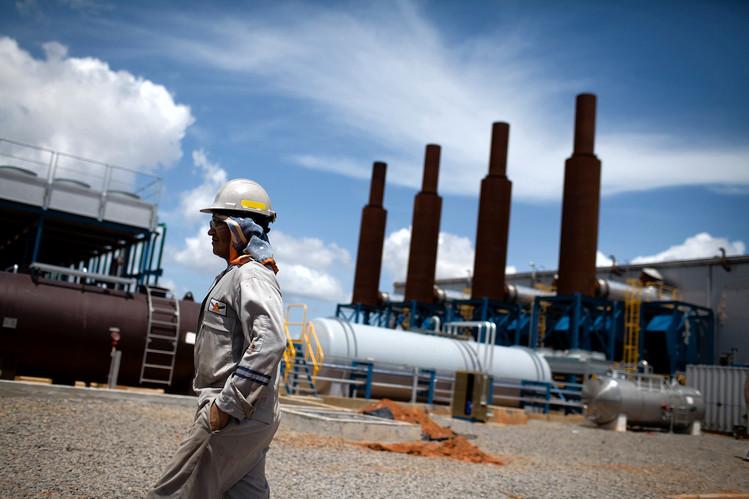
OPEC CUTS 140%

AOG - Compliance of the Organisation of the Petroleum Exporting Countries (OPEC) with an oil output cut exceeded a target, standing at 140% in February, while non-OPEC producers' compliance was 50%-60%, Kuwaiti Minister of Oil, Water and Electricity Essam Al¬ Marzouq said.
He attributed OPEC's compliance to deep production cuts by Saudi Arabia, a voluntary act aimed at increasing confidence in the output reduction agreement reached in late 2016.
Under a deal signed late last year, OPEC and non-OPEC countries agreed to reduce output by around 1.8mn barrels per day (bpd) as part of a concerted effort to curb a global oil glut.
Kuwait is scheduled to host a ministerial meeting on March 26th comprising both OPEC and non-OPEC producers to review compliance with the output agreement, the second such meeting since the deal was reached.
The oil ministers of Saudi Arabia, Russia, Kuwait, Oman, Algeria, and Venezuela will attend the meeting, along with the OPEC's Secretary-General, Al¬ Marzouq said.
It was also reported that the United Arabic Emirates (UAE) will comply fully with its OPEC commitment to reduce oil production by more than 139,000 barrels per day (bpd) in March and April, the nation's energy minister Suhail said last week.
"UAE production cut for March and April will be more than 139,000 bpd due to the maintenance activities, which means more than 100% compliance," Suhail al-Mazrouei wrote on his Twitter account, confirming Al¬ Marzouq's statement.
The UAE, among the core Gulf OPEC group that traditionally shows high compliance with output agreements, has focussed on expanding its production capacity in the last few years.
Compliance with output restrictions has often been a problem for OPEC in the past but this time the group delivered reductions amounting to as much as 90% of the target in the first month alone.
The UAE has delivered a smaller portion of its pledged reduction, based on its own figures and OPEC output estimates by government agencies, consultants and industry media.
Under the OPEC deal, the UAE was to cut production to 2.874mn bpd. It told OPEC it produced 3.06mn bpd in January, and a Reuters survey estimated its output at 2.98mn bpd.
Still, officials and industry sources say the UAE will try to move closer to its target in the coming months, improving average compliance during the six-month duration of the supply cut rather than focussing on month-by-month performance.
Oilfield maintenance could help to push compliance higher. Abu Dhabi National Oil Company (ADNOC) has work planned at oilfields in March and May, people familiar with the matter said according to Reuters.
ADNOC said last week it had informed customers of cuts in crude allocations for March and April.
In March, only Upper Zakum crude grade will be cut by 5%, while in April both the Murban and Das grades will be reduced by 5%, and Upper Zakum by 3%, it said in a letter to customers dated March 6 and received by Reuters on last week.
Meanwhile, Iraq reported lower oil exports, reflecting compliance supply cuts decided by OPEC.
Iraq's daily oil exports stood at 3.269mn barrels per day in February and 3.320mn bpd in January, the oil ministry said in an emailed statement last week, according to Reuters.
The volumes announced cover all exports made by state-run oil marketer SOMO from the southern ports on the Gulf and from the Turkish terminal of Ceyhan on the Mediterranean, it said.
Nearly all the oil sold was from the south as exports from Ceyhan ran at an average of 45,000 bpd in January and 29,000 bpd in February. Ceyhan receives crude from the northern Kirkuk oil fields.
-----
Earlier:
UAE CUTS OIL PRODUCTION 139,000 BPD

